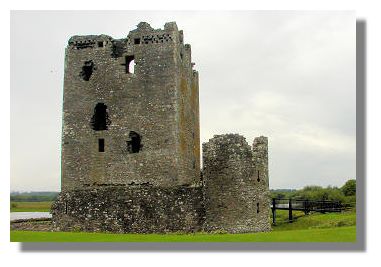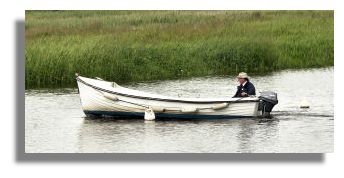
Places to Visit in Scotland
- Threave Castle, Dumfries

Location, Location, Location
The name Threave may have been derived from the Old Welsh "Tref" meaning "homestead" in the days before the end of the 6th century when Old Welsh was the language of Galloway and the south-west corner of Scotland. Built on an island on the river Dee in Dumfries and Galloway, Threave is 20 miles to the south-west of Dumfries and to the south-west of the town of Castle Douglas - this was at one time very much a heartland of the "Black" Douglases. But there is a legend that Threave Island was the base for Fergus, Lord of Galloway and his descendants from the 11th century onwards, prior to the arrival of the Douglases.
Threave must be the only castle in Scotland where visitors ring a ship's bell to summon the boat to take them across the river.
Early History
Threave Castle is first recorded in 1400 when Archibald "The Grim", third Earl of Douglas, died there on Christmas Eve. Archibald's nickname was given to him by the English - wearing a "grim" face, he ejected them from Lochmaben Castle and that corner of Scotland in 1384.The Douglases had helped King David II, son of Robert the Bruce to destroy the Balliol domination of Galloway. It is likely that the present castle was built for Archibald after he became Lord of Galloway in 1369. Although Archibald owned large estates in Galloway, he was not popular with the local inhabitants - so a stout castle was doubtless a necessity. Not that he would spend a lot of time there as he inherited the title of Earl of Douglas (the third holder of the honour) and spent a lot of time on affairs of state in Edinburgh and at his other castles such as Douglas and Abercorn. He also married Joanna Moray, heiress of the Moray estates around 1362. That added Bothwell Castle to his portfolio.
The son of Archibald "The Grim" and the fourth Earl of Douglas married Margaret Stewart, the eldest daughter of King Robert III. Margaret lived in Threave for more than 25 years after her husband had died in battle, fighting for the French against the English.
In the middle of the 15th century, King James II began to destroy the power of the Douglases, starting with the murder of the Earl of Douglas at Stirling Castle in 1452. By 1455 all the Douglas castles had been destroyed and only Threave remained. Siege guns were used but the artillery fortification round the tower house allowed it to withstand the cannon. It seems that it eventually surrendered after two months because the defenders were bribed with money and land.
New Owners
The castle became crown property and there is a record of a visit by King James IV in 1502 when casks of red wine and claret and a large quantity of woollen cloth were purchased to make his stay more enjoyable.In the 16th century the Maxwells became hereditary custodians of Threave (though their main seat was at Caerlaverock Castle). In the 17th century the Maxwells supported King Charles I and Threave Castle was besieged by the Covenanters. After holding out for thirteen weeks, King Charles himself authorised Robert Maxwell to walk out of the castle with honour. Orders were given to remove the roof and timbers but a substantial part of the tower house and artillery fortifications still survive. The castle was never occupied again. It is now in the care of Historic Scotland.

Visiting Threave Castle Today
You can find Threave on Multimap (use the controls to zoom in or out). Allow plenty of time for your visit - the car park is some distance from the jetty where the motor-boat takes you across a short stretch of river to the island. The pathway is fenced off from the sheep and cattle in the fields and is pleasant walk on a sunny day (but can get a bit waterlogged after heavy rain). At busy times, you don't really need to ring that bell to summon the boat as it is crossing backwards and forwards all the time.There are Historic Scotland interpretation boards to help you to understand more about the castle and its history - and the Historic Scotland booklets are always a mine of information and are a bargain price too! You can wander around inside the building. And look out for the local wildlife - there was an Osprey visible on the top of a tree not far away when I was there and they can often be seen flying in the area.
Unlike most Historic Scotland properties that are open throughout the year, Threave Castle is open only in the summer (1 April - 30 September), Monday to Sunday, 9.30am to last outward sailing at 4.30pm.
Return to Index of Places to Visit.
Where else would you like to go in Scotland?

